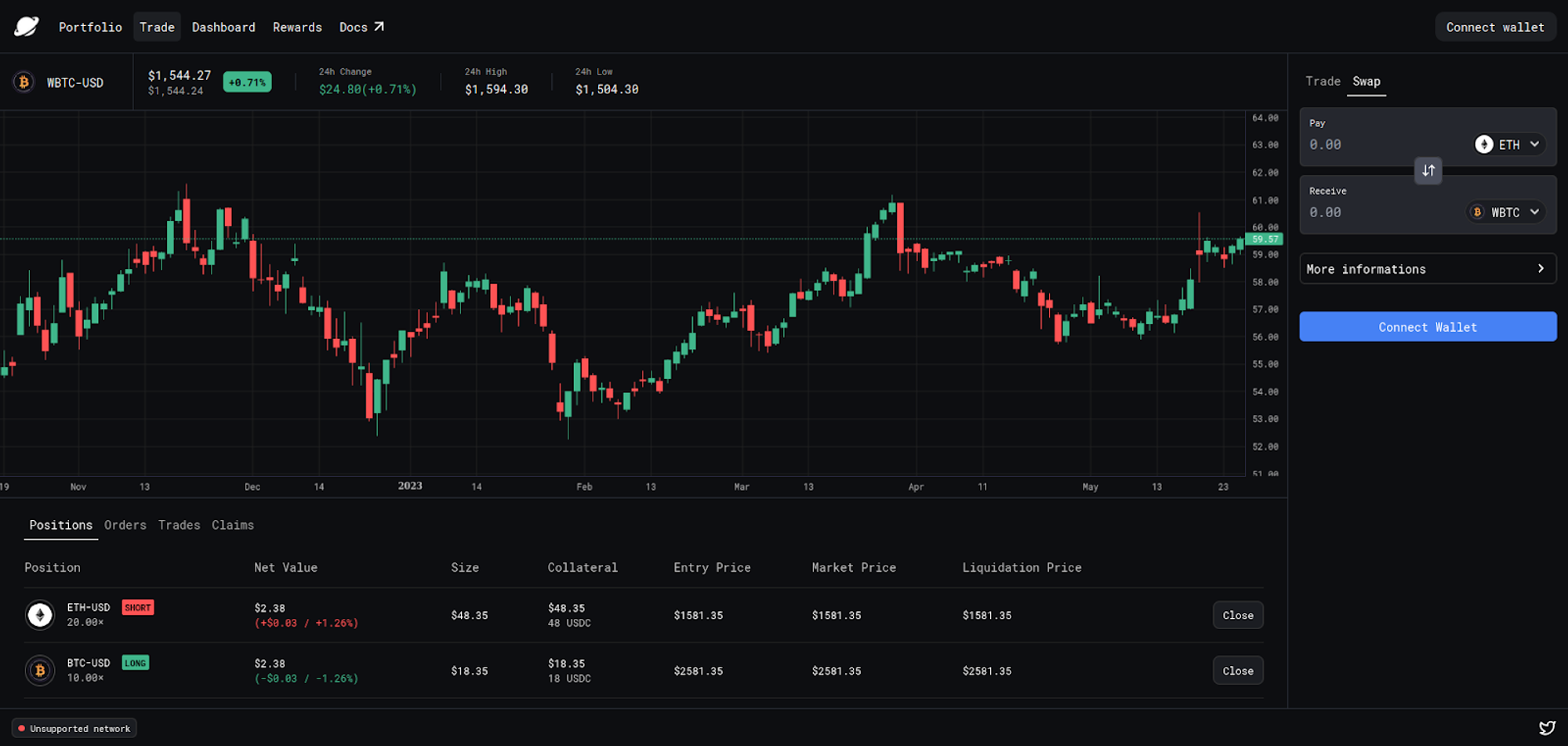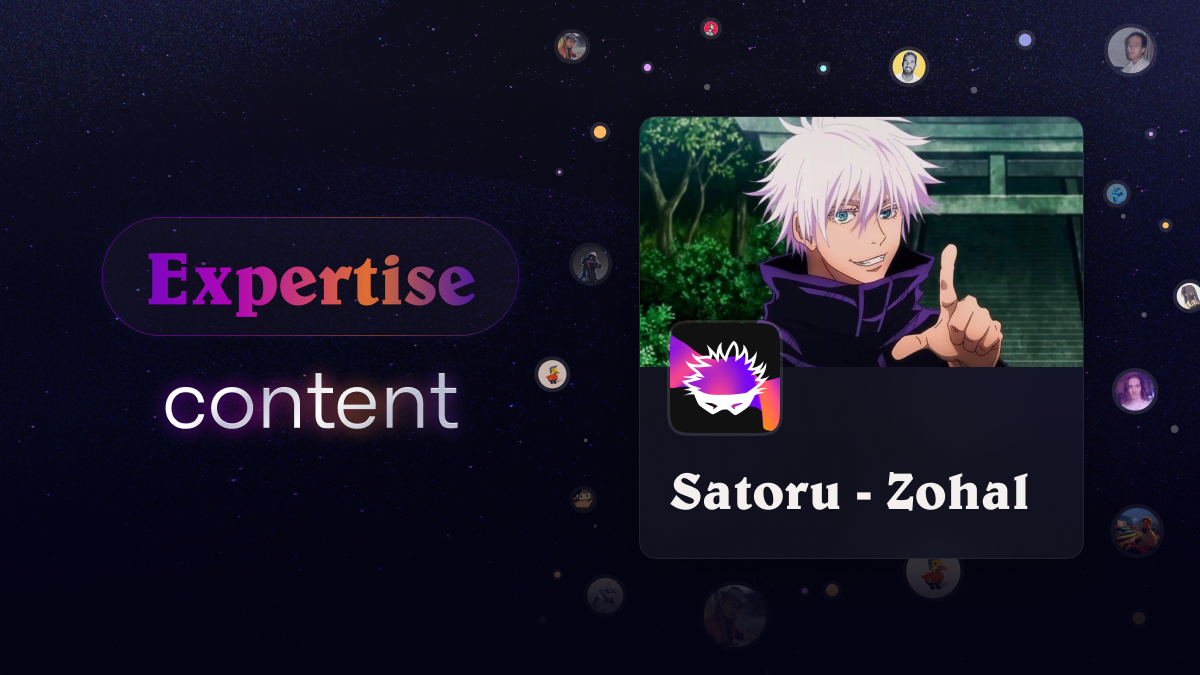In the powerful and ever-changing world of Starknet open-source development, where innovation is constant, Zohal stands out as a key DeFi (Decentralized Finance) project. It is built on the foundation of Satoru, a synthetics platform known for its solid infrastructure.
Launched in August 2023, Zohal is a Synthetic Perpetual Decentralized Exchange. It leverages the open-source codebase of Satoru to create useful DApps on Starknet. Satoru is built on top of infrastructure giants like Madara and Cairo-VM. While these are important, the true potential of a blockchain network comes from the applications it hosts. Zohal and Satoru, together, show how open-source development and business innovation work in Starknet.
In this article, we're therefore going to dive into the world of Satoru, uncovering the technical details that drive its success. Plus, we'll explore how Zohal taps into Satoru’s strengths and the real-life examples that show their positive influence on Starknet.
So, let’s go!
Diving into Satoru and Zohal
Before we begin, let’s take a look at Satoru and what it entails before diving into Zohal.
Satoru: A new era for Starknet

Satoru is not just a project; it’s a leap towards the future.
Designed to be a robust, open-source protocol, Satoru’s primary goal is to facilitate the development and implementation of Perpetual-related DApps (decentralized applications) on Starknet. For those unfamiliar with that term, Perpertual-related Dapps are financial derivatives similar to futures contracts, offering traders the ability to speculate on the price of an asset. Satoru integrates synthetic assets, key instruments in modern finance, which are ingeniously designed to mimic the price movements of a wide range of assets, allowing traders to speculate on these prices without the necessity of owning the actual assets.
But what sets it apart? Satoru has been developed in a very modular way, making it easy for developers to get involved in its development or to make products on top of it.
Projects built on top of Satoru could include platforms for forex trading, enabling currency exchange and speculation, commodities trading systems for assets like gold or oil. The appeal of Satoru, with its robust open-source architecture, inspired the creation of Zohal. Zohal’s goal was to leverage Satoru's versatility for an innovative application showcasing the potential of blockchain in real-world solutions.
The Technical Backbone of Satoru
At its core, Satoru is built to leverage Starknet’s unique capabilities. Starknet, with its Layer 2 scaling solution, offers enhanced transaction throughput - meaning it can process a higher number of transactions per second. This enhancement also leads to reduced costs, thus making transactions more affordable for users.
All this makes it an ideal platform for ambitious Financial DApps. Satoru benefits from this potential, offering a codebase that simplifies and accelerates the Perpetuals DApp development process. Satoru is thus is built using an innovative Synthetic Perpetuals architecture for the assets that will be traded on it.
To those that may have just come across this term - Synthetic perpetuals - we can define them as financial instruments designed to emulate the price movements of various assets without the need for actual ownership of those assets. They operate on a mechanism similar to traditional perpetual contracts but are synthesized using smart contracts on a blockchain. This approach allows traders to gain exposure to an asset’s price movements, be it cryptocurrencies, commodities, or indexes, without holding the underlying asset.
One of the primary benefits of synthetic perpetuals is the ease of access they provide. Traders can engage with a wide range of assets on a single platform without the need for multiple brokerage accounts or the complications of physical asset custody. Moreover, synthetic perpetuals offer high liquidity, often better than what’s available in the actual underlying asset market, which is a significant advantage for traders looking to execute large orders or trade in less liquid markets.
Another reason why Satoru is an ideal platform for financial DApps, is that there are “Keepers”. Keepers on Satoru play a huge role in enhancing the protocol’s functionality and efficiency. These external parties or automated bots are programmed to perform specific tasks, which are pivotal in maintaining the smooth operation of the dApp. They automate routine yet critical tasks such as updating Orders states, executing timely transactions, and managing liquidations, thus ensuring that the protocol operates seamlessly and efficiently. This automation is key to improving network stability and reliability, essential in a blockchain environment.
For users interacting with the Satoru platform, keepers also significantly enhance the user experience. They ensure quick and efficient transaction execution, crucial in trading and other financial operations where timing can impact outcomes. Keepers help maintain market efficiency and fairness, executing orders accurately and preventing issues like order congestion or manipulation.
They also play a critical role in risk mitigation, by managing and liquidating undercollateralized positions to protect the platform from market volatility and ensure its stability.
Community Driven Success: The Growth Statistics of Satoru

Since its inception, Satoru has rapidly grown to become a cornerstone in the Starknet open- source community, a fact reflected in its impressive statistics. As of now:
- the project has gathered over 40 active contributors from around the globe - a testament to its international appeal.
- contributors have collectively made over 300 commits, indicating a vibrant and continuous development effort.
- the repository has been forked more than 61 times, showcasing the widespread interest and potential adaptations of Satoru's technology.
These numbers not only represent Satoru’s growing influence in the Starknet ecosystem but also highlight the active, community-driven approach that is pushing its development forward.
Practical Examples and Applications
Use Cases of Satoru
After having looked at the technical details of Satoru and what sets it about, it’s also interesting to explore how you can use Satoru. Zohal is just one strong example; a lot of different Financial services can be built on top of Satoru! Its potential is limited only by the imagination of developers.
For instance, a decentralized finance application built on Satoru could offer commodities trading thanks to its synthetic liquidity model which means that the assets traded do not necessarily have to be owned by the users, but are simulated synthetically.
Beyond commodities trading, the scope of Satoru can extend to numerous other financial services, each showcasing its adaptability and potential. For example, a platform for forex trading can be developed on Satoru, allowing users to engage in the exchange of global currencies with enhanced efficiency and lower costs, thanks to its optimized blockchain infrastructure.
Additionally, Satoru can also be used to create a decentralized stock market, where users can trade synthetic versions of popular stocks, enabling participation in global equity markets without the need for traditional brokerage services.
Zohal: An application built on Satoru
This brings us to Zohal: the first major project built on top of Satoru, showcasing how Satoru can be used to create powerful applications.
So what is Zohal exactly?

Zohal is a trading platform that combines the efficiency of centralized exchanges with the trust and security of decentralized models, all while being incredibly user-friendly.
Furthermore, Zohal clearly illustrates the potential in building on Satoru. It demonstrates how applications can benefit from advanced blockchain technology to deliver services that are not just secure and efficient, but also user-centric.
Thanks to Starknet native account abstraction, a more seamless integration of user wallets and transactions is possible, reducing the technical barriers typically encountered in DeFi. Meanwhile, its CEX-like user interface mirrors the familiar, intuitive experiences found in traditional financial exchanges.

In essence, Zohal sets a new standard for achievements in decentralized applications, paving the way for future projects leveraging Satoru's unique features and capabilities.
Zohal: Bringing it to Life
We can say that Zohal’s implementation helps demonstrate Satoru’s real-world utility.
By providing a secure and efficient trading platform, Zohal is not just an application, it’s a testament to the power of Starknet and Satoru working together. Zohal uses Satoru's advanced blockchain infrastructure to offer a range of innovative and accessible decentralized financial.
For instance, through Zohal, users can engage in perpetual trading, benefiting from Satoru's precision and security in the volatile world of crypto assets.
Moreover, Zohal leverages Satoru’s account abstraction feature to create a user experience that closely resembles traditional Centralized Exchanges, making it easier for those new to blockchain users to navigate and use DeFi services.
And lastly, building Zohal on Satoru comes with a lot of advantages.
One key advantage is integration with Starknet’s high-speed transaction processing, making Zohal a lightning-fast trading platform. Additionally, the inherent security features of a decentralized framework provide users with peace of mind while trading.
What’s coming next?
As we look ahead, there is great potential that Satoru will continue to stand as a promising development in the Starknet ecosystem.
Just as we saw in the article, Satoru is not just a protocol; it’s a foundation for future innovation. And this is what Zohal has been proving.
With Zohal paving the way, we can very likely anticipate a surge in creative and impactful DApps on Starknet, such as: SocialFi, Games, Financial Products, NFT marketplaces, etc. Each will contribute to the ever-evolving blockchain landscape.
It’s thus safe to conclude that Satoru isn’t just building applications; it’s shaping the future.

As a reminder, OnlyDust is a platform that helps connect developers with the most exciting open-source projects. The added bonus? A strong community and rewards for contributions.
